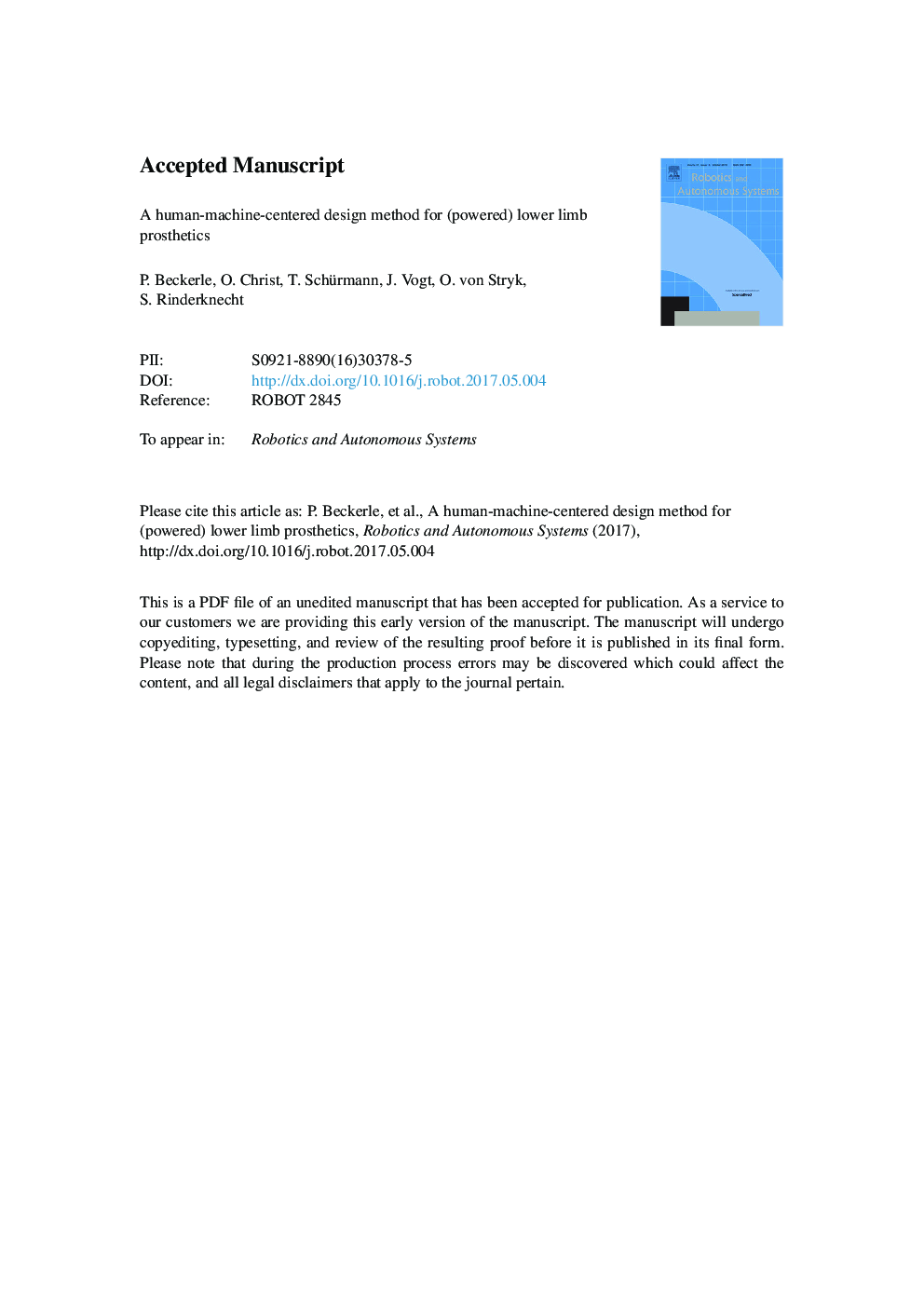| Article ID | Journal | Published Year | Pages | File Type |
|---|---|---|---|---|
| 4948660 | Robotics and Autonomous Systems | 2017 | 42 Pages |
Abstract
This paper proposes a human-machine-centered approach to lower limb prosthetic design. The approach is based on a profound analysis and modeling of human factors from user and expert survey data. With this knowledge, user demands are considered in the prioritization of technical requirements. To evaluate the design framework, it is applied to the example of the design of a powered prosthetic knee. Key result of this application are a distinct changes in technical requirement priorities that might yield completely different prosthetic designs. Thereby, the potential of the proposed method is substantiated while a practical evaluation is aspect to future studies. Beyond this, the method is easily transferable to other robotic devices operating close to their users, e.g., exoskeletons or teleoperators.
Related Topics
Physical Sciences and Engineering
Computer Science
Artificial Intelligence
Authors
P. Beckerle, O. Christ, T. Schürmann, J. Vogt, O. von Stryk, S. Rinderknecht,
